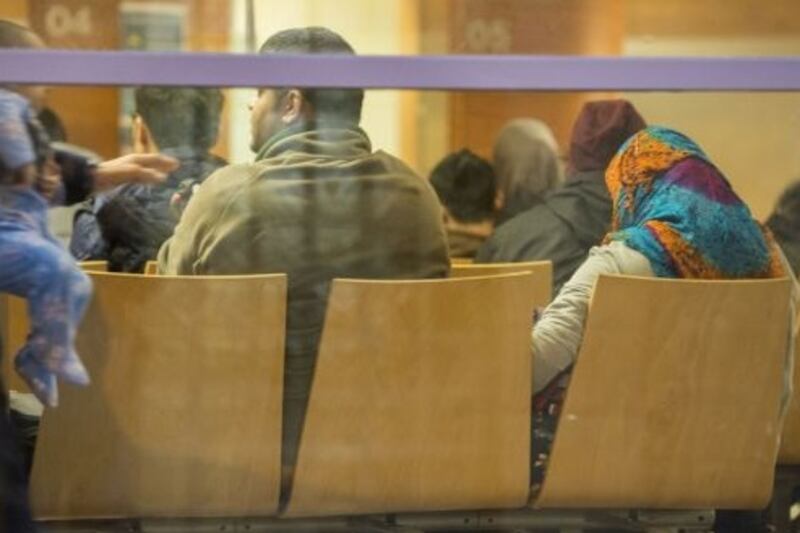Helen O’Shea’s daughter is used to doing her homework at the back of the classroom during religious education.
As an atheist parent, she says it is the price pupils pay in an education system which is still dominated by religion.
“There’s an assumption that everyone is okay with religious instruction or a priest coming into the classroom . . . and if you’re not, you’re relegated to the back of the class and treated like a second-class citizen.”
So she was encouraged when the Department of Education published a circular last year which instructed State-run secondary schools to offer alternative subject choices to students who did not wish to study religion.
In the mostly conservative world of education, this was a game-changer.
It stated that the past practice of assuming that pupils were predominantly Catholic and arranging religious instruction accordingly was no longer appropriate.
Instead, parents would have to be polled on whether they wanted their children to study religion or, significantly, a different, timetabled subject.
The circular applied only to State-run schools, which account for about half of secondary schools.
These are run by local Education and Training Boards (ETBs) and community schools, which are run jointly by ETBs and the Catholic Church.
Voluntary secondary schools, typically run or owned by religious organisations, were not affected by the circular.
"I was delighted," says O'Shea, whose daughter attends a community school in Ardee, Co Louth.
"I never baptised my daughters and went out of my way to send them to an Educate Together primary school . . . But religion has a way of encroaching into your life, especially in the education system."
Fierce opposition
The department’s move, however, was fiercely opposed by groups such as the Catholic Church, Education and Training Boards and the Teachers’ Union of Ireland.
Documents obtained by The Irish Times last year show Catholic bishops warned the department that students who would receive tuition in an exam subject instead of religion would receive an unfair advantage.
Religion teachers were also highly critical and insisted the circular was leading to widespread confusion
(Instead, they proposed that such students who opted out of religion should be offered a course in “religious heritage and values as well as ethics”).
Education and Training Boards complained of having to offer an alternative subject without being given additional resources to do so.
Religion teachers were also highly critical and insisted the circular was leading to widespread confusion by not clarifying the difference between “religious instruction” and “religious education”.
While it said “religious instruction” related to the teaching of a particular religion for pupils of that faith, “religious education” was a much wider subject open to all pupils, regardless of their belief.
Watered down
In October last year, in the face of this opposition, the department issued a “clarification” of its circular which watered down much of the meaning of the original.
In a significant reversal, it said the State-approved curriculum on religious education did not contain any element of “religious instruction, formation, indoctrination or worship”.
As a result, opting out of the subject and being timetabled for an alternative subject “does not arise”.
However, the revised circular still included some significant changes.
It said students who opted out of religious instruction (such as worship or faith-specific teaching) should be timetabled for alternative subjects, rather than doing homework at the back of class.
It also said schools should proactively establish the wishes of parents in relation to opting out of religious worship or instruction.
Schools shouldn't be allowed to cherry-pick what suits them when it comes to religion
This should be integrated with the school’s processes for establishing subject choices generally.
New documents, however, show most State schools are ignoring this revised circular.
ETB schools, for example, have been recently directed by their umbrella body to “maintain the status quo in relation to the provision of religious education and opting-out arrangements”.
The evidence on the ground in many community schools, similarly, is that the latest circular is not being implemented.
Obstacles
Sources in these schools argue that the lack of funding to provide for additional teaching for non-religious students is a key obstacle.
However, schools are required to follow procedures set down in department circular letters.
In a statement, a Department of Education spokesman confirmed that the circular applied to all “community and ETB post-primary schools”.
Meanwhile, parents such as Helen O’Shea remain as frustrated as ever over what she sees as the violation of non-religious students’ rights and those of their parents.
“Schools shouldn’t be allowed to cherry-pick what suits them when it comes to religion . . . It shouldn’t be so hard to uphold a child’s constitutional right to drop out of religion.”












